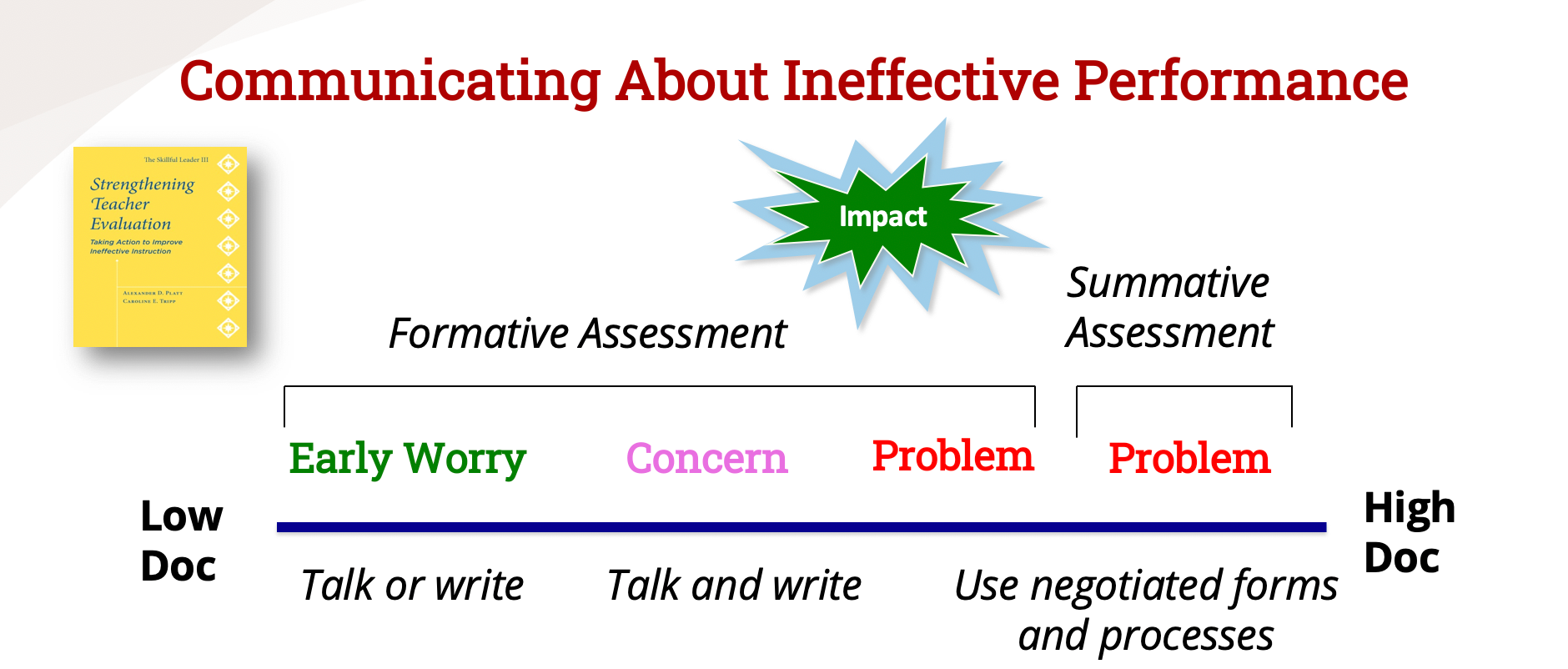About This Course
One of the most challenging aspects of teacher evaluation systems is how to improve the quality of instruction by underperforming teachers. Knowing how to support these teachers, often rated “needs improvement” or “unsatisfactory”, is a source of ongoing frustration. In this practical program, participants will learn to identify and assist individuals whose current instruction is not positively impacting student growth and outcomes. Sample strategies and approaches from the book by Platt and Tripp, Strengthening Teacher Evaluation: Taking Action to Improve Ineffective Instruction, aka The Skillful Leader III (2014).
Goals
Participants will learn how to use multiple sources of data to diagnose issues, document and communicate problems skillfully, and design appropriate interventions to improve the quality of instruction. Case studies, video clips, artifacts and dozens of practical examples from K-12 will illustrate how to:
- Use a repertoire of communication strategies to match different individuals’ needs and range of situations
- Create strong, effective recommendations and follow-up
- Craft mini-plans to put improvement in place quickly
- Write formal improvement plans
Course Format
Participants are asked to bring district performance standards and hard questions and to be ready to compare notes with others who want to improve students’ opportunities to learn and are facing similar obstacles. If possible, participants are encouraged to come with a team and leave ready to support one another’s efforts and “take on the really tough stuff.”
Resources
In this 3 day module we focus on the subtitle: Taking Action to Improve Ineffective Instruction and we use this Action Cycle graphic to outline what that means/looks like.
It begins with the core commitment to - and conviction about- looking first at student learning to diagnose problems by first, understanding what is and is not working, how to define and communicate the issues we see, and then deciding how to help by designing interventions and support structures that ultimately and effectively have a positive impact on the instruction. Each of the blue shaded areas behind each phase of the cycle represents data being collected to support our assessment, looking at multiple sources of data and what kind of data matches the mission in each part of the cycle.

A major focus of this module is on defining the problem and matching how we communicate – using a repertoire that slides along this continuum from low documentation to high documentation. From using formative assessment data to decide on how/when we communicate an early worry or concern, to when the problem has become a pattern or has escalated and how we match our communication to that level of seriousness.

Course Information
Groups of 25 or more: Submit a Service Request to discuss how this course could benefit educators in your school or district.
Individuals or less than 25: Fill out our Open Enrollment Interest Form to be notified of the next open enrollment opportunity.
